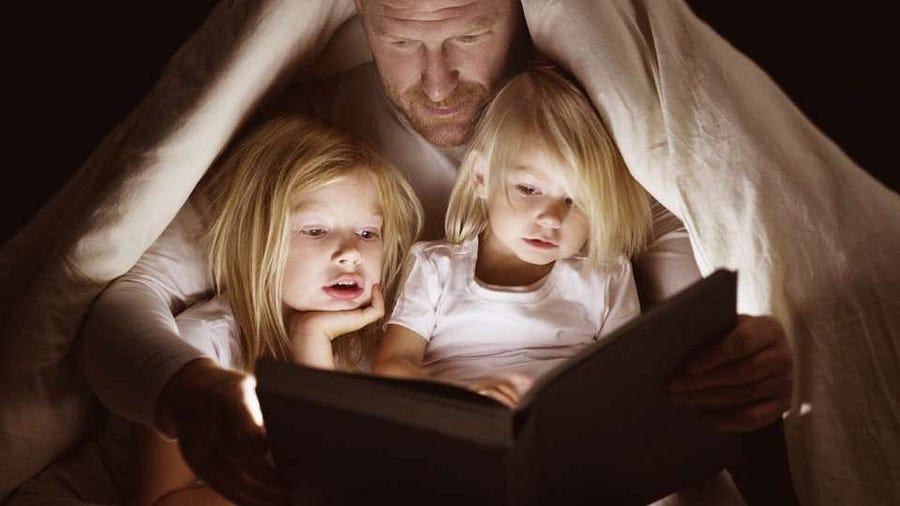Many confuse empathy (feeling with someone) with sympathy (feeling sorry for someone), and even researchers who study it have muddied the waters with many definitions. It’s time to clear the water and see-through.
Let’s take an example of an event to understand empathy.
Step 1: You don’t care about someone, something, or you have a preconceived notion of how you should feel about someone or something.
Step 2: You hear, read, or watch a story about that someone or something.
Step 3: You have a newfound respect, understanding, and empathy for that someone or something.
I bet you’ all had that feeling at least once in your lifetime.
This is not some magical trick that happens to all of us. It is the science of stories, and how they impact our learning and empathy for others.
The short version of the science is this: Our brains pay special attention to stories, engaging more areas of the mind then when we hear or see facts. And when we learn a good story, our brains synthesize the neurochemical oxytocin. This helps us feel others’ emotions and empathize with them.
Scientists have shown that high oxytocin levels lead us to donate more to charity, be more interested in people’s well-being, and have more respect for “others” who aren’t like us.
Whether it is Ryan Gosling, or a co-worker, or a student, or an enemy. When we know each other’s stories, we find empathy in places we did not expect to find it.
The Science Behind Storytelling
Every night before my boys go to bed I tell them a story. Sometimes it is based on the day’s events, and other times it is a story about when I was a child, but usually, it is completely made up, and they love it. They also vividly remembers the stories later on.

If I hit on a similar theme or topic in my bedtime story the next day, or next week, or even next month, they call me on it. They let me know that I talked about that before, or that this sounds like the other story I told them. They’ll also relate our bedtime stories to real events that happen, and many of the same themes and topics that come up in our stories, come up in our lives.
This is not unique to my kids, instead, it is based on science and research. “A 2010 study in the Proceedings of the National Academy of Sciences showed an intimate connection between the brain activity of speakers and listeners in conversation, demonstrating how the brain of an engaged listener “syncs up” with a speaker. By engaging students with compelling stories that impart important material, teachers reach students both emotionally and biochemically, increasing the potential for rich learning experiences.”
Sherrelle Walker — a teacher, administrator, and professor of 30 years — wrote about the science behind stories:
Scientists have long known that human beings are storytelling creatures. For centuries, we have told stories to transmit information, share histories, and teach important lessons. While stories often have a profound effect on us due to emotional content, recent research also shows that our brains are actually hard-wired to seek out a coherent narrative structure in the stories we hear and tell. This structure helps us absorb the information in a story, and connect it with our own experiences in the world.
So, if you are like me, maybe this is all starting to make sense. I know that I learn best through experience and stories. If I think back on some of my best learning experiences they were often either having to do with hearing a great story or creating a new story. When I look at what articles I enjoy, they almost always teach me something through a story. That is the initial hook of many great learning experiences.
But yet, so often in our techno-focused world, we fail to take the time to actually teach through stories. I’m guilty of this, you might be too. Technology is a great tool for learning, but guess what, storytelling might be a better tool, and it builds empathy.
Leo Widrich, the co-founder of Buffer, wrote a fantastic article on the science behind storytelling. He explains that our brains can’t help but function differently when we are being told a story:
When we are being told a story, things in our brain change dramatically. Not only are the language processing parts in our brain activated, but any other area in our brain that we would use when experiencing the events of the story are too. And yet, it gets better.
When we tell stories to others that have really helped us shape our thinking and way of life, we can have the same effect on them too. The brains of the person telling a story and listening to it can synchronize, says Uri Hasson from Princeton:
“When the woman spoke English, the volunteers understood her story, and their brains synchronized. When she had activity in her insula, an emotional brain region, the listeners did too. When her frontal cortex lit up, so did theirs. By simply telling a story, the woman could plant ideas, thoughts and emotions into the listeners’ brains.”
Anything you’ve experienced, you can get others to experience the same. Or at least, get their brain areas that you’ve activated that way, active too.
Stories provide a window and a mirror into our lives and the lives of others. And, isn’t that what empathy is all about. Putting yourself in another person’s position and perspective.
Here are few other articles written by me! Hope you'd enjoy!
8 simple tips to boost your personality by taking care of your body.
9 Simple Tips To Help You Subsis Any Anxiety, Distress Or Concern related To The Corona Virus (COVID-19)
Follow this simple set of rules and experience the difference
Forgiveness helps heal relationship wounds.











0 Comments